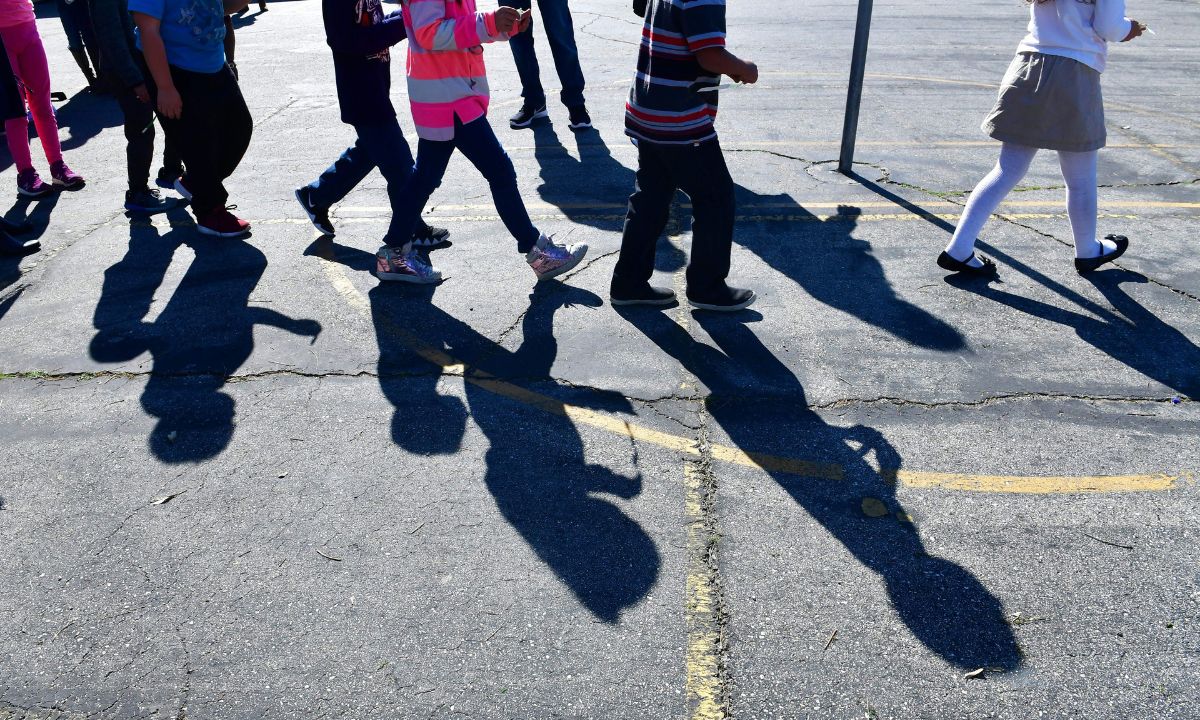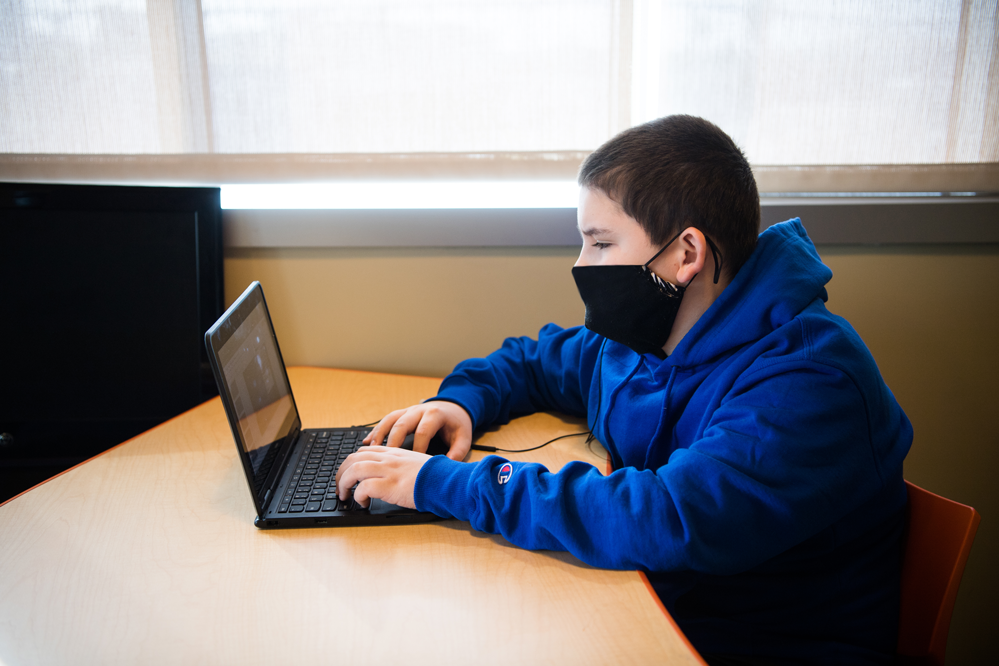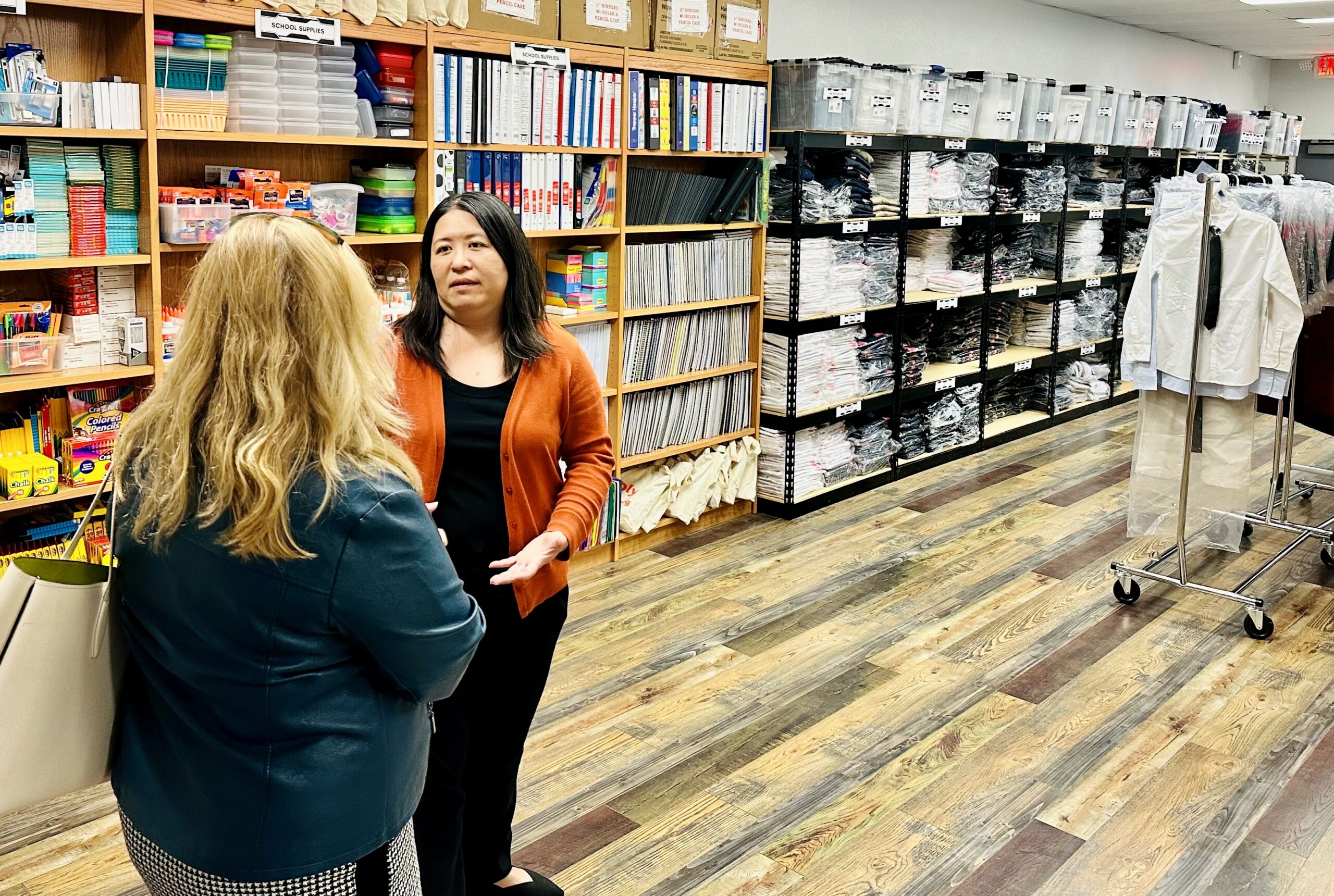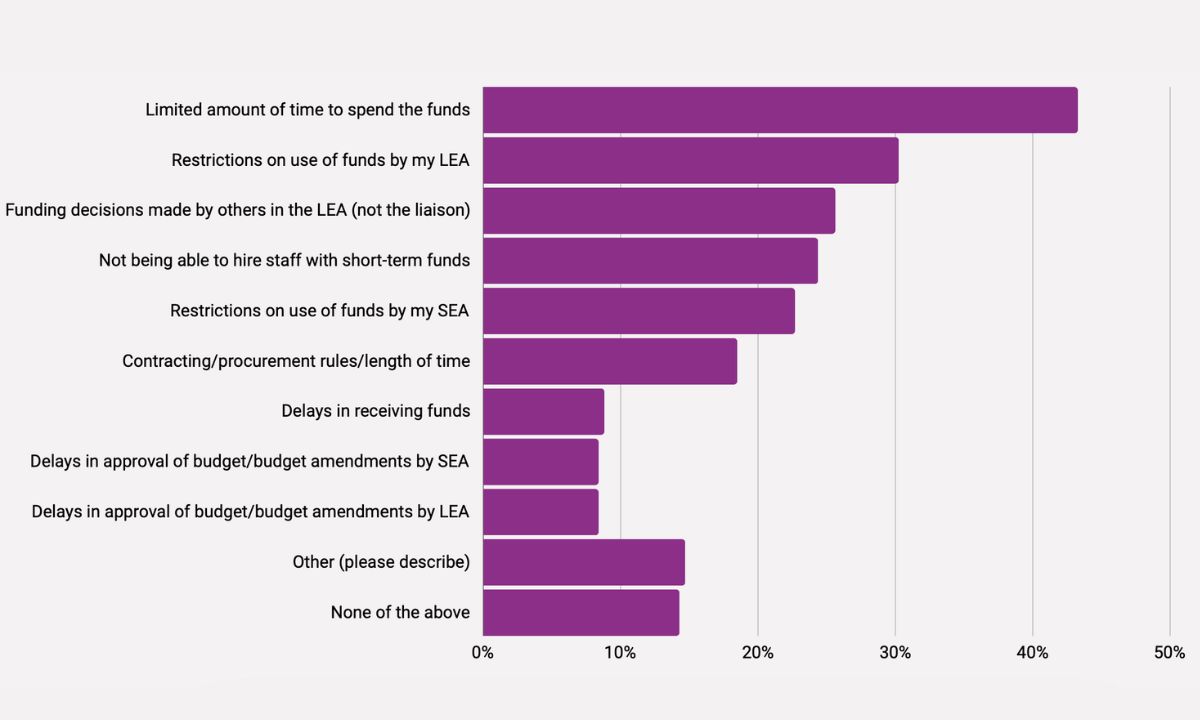Gas, Food, Lodging for Homeless Students in Jeopardy as Funding Deadline Looms
A new report released Wednesday asks lawmakers to extend this year’s deadline to spend $800M in emergency funds.

Get stories like these delivered straight to your inbox. Sign up for The 74 Newsletter
For the past two months, home for Lori Menkedick and her family has been the Evergreen Inn, a Los-Angeles area motel just off Interstate-210. They’ve bounced between similar establishments east of downtown for almost three years.
But room rates consume most of the $650 a week her husband earns from construction. The family depends on prepaid grocery cards from the Hacienda La Puente Unified School District to cover other basic needs.
“Without that, we probably wouldn’t be able to eat some days,” Menkedick said.
Gas station cards allow her to get her 17-year-old daughter to school. A T.J. Maxx gift card purchased a dress for the girl’s first dance. The district, she said, has “gone way above and beyond” to help families in such dire situations.
But those services and others like them could soon be jeopardized. The extra $800 million in federal funding districts across the country have relied on to cover emergency expenses for the nation’s homeless students runs out later this year.
In a report released Wednesday, advocates called on lawmakers to extend the spending deadline for another year. Once those funds expire, many will be scrambling to keep serving families in crisis.
“I don’t think a lot of people realize — especially people in Washington, D.C. — that when they were allocating these funds as a response to COVID, this was money we have actually needed for a really long time,” said Susanne Terry, coordinator of homeless education services for the San Diego County Office Education. “We don’t see it as COVID relief; it’s just relief.”
California’s ‘most vulnerable’
The money came at a critical moment. Since the pandemic, homelessness has continued to rise, with rates hitting a new record last year. Among families with children, there was a 16% increase over 2022, federal data shows.
The needs are particularly great in California, which has the highest per capita homelessness rate next to Washington, D.C. Last year, the state spent over $7 billion on roughly 30 different programs focused on reducing homelessness, but most of those efforts didn’t reach students.
Terry’s office used some of its $960,000 from the relief program to create a new position, a specialist who helps shelter staff follow the federal law outlining services to homeless students.
The training came at the right time for Veronica Sandoval, the first-ever education coordinator at Father Joe’s Villages, which runs homeless shelters in San Diego. She was unfamiliar with how to help families, often refugees, who were being turned away from schools because they lacked the required paperwork. The shelter also serves mothers who escaped domestic abuse.
“Their priority is surviving and making sure that their kiddos are fed,” Sandoval said. “Sometimes education is not at the top of the list.”
With the specialist’s guidance, Sandoval learned how to help parents find transportation, overcome language barriers and navigate the bureaucracy of registering for school. Now, for the first time in the nonprofit’s 70-year history, all of its school-age children — about 180 — are enrolled.

Sneakers and backpacks
The pandemic aid legislation, a bipartisan amendment to the 2021 American Rescue Plan, totaled eight times the amount states typically receive from the federal government to serve students who frequently double up with other families or live out of their cars. Many districts received dedicated funding for homeless students for the first time, according to the SchoolHouse Connection report, which was based on a national survey of over 1,400 homeless liaisons.
Some districts used the money for store and gas cards. Others paid for short-term housing, mental health services and technology like laptops and cellphones.
More than half of the respondents said they plan to use federal Title I funds to continue some of the services, but 35% don’t plan to provide the same level of support.

Like a ‘widget maker’
But not all districts have been as efficient as Hacienda La Puente at spending the money. Because the funds will expire later this year, some districts prohibited departments from hiring extra staff that they’d have to let go.
Without extra personnel to purchase supplies and coordinate short-term hotel stays, finding ways to distribute the funds is often viewed “like an added thing on your plate,” said San Diego’s Terry.

Contracting and purchasing rules have also been “roadblocks to quickly and effectively spending” the money, said Barbara Duffield, executive director of SchoolHouse Connection.
She received one email from a frustrated homeless liaison whose request to purchase a van to get students to school was rejected. A state official responded that “a yellow school bus” was the best way to get students to school.
The liaison wrote to Duffield: “If we had enough drivers and yellow buses we wouldn’t be asking for a van.”
Such hurdles help explain why a quarter of the homeless liaisons worry the funds will dry up before they have a chance to spend it. Ohio districts, for example, still have not spent almost half of the $18.8 million they received, according to the state’s relief funds website. And Alabama districts have only spent about 45% of the $9.93 million they received.
Liaisons say they need more time to spend the money. Some received it late, and others proposed ideas that were turned down. One New Hampshire district rejected requests to spend the money on eyeglasses, taxis for students and clothes, according to a liaison quoted in the report. Officials said staff first had to “exhaust all community resources.”
Those findings echo Jennifer Kottke’s experience at the Los Angeles County Office of Education, where she serves as a homeless education project director. The county received over $3 million from the program. She asked to spend $280,000 on school and hygiene supplies — a request, she said, that should have taken about three months to approve. Instead, it took twice that long. At one point, the paperwork required 12 signatures.
Expected in October, the order arrived just last week. The red tape, she said, hampers her ability to help families in crisis and sometimes makes her feel like another “widget maker in the factory.”
In July, according to California Department of Education data, the Los Angeles office still had over $2.6 million to spend. Kottke used about $400,000 for a tutoring program that has served 500 students, but will terminate at the end of the school year.
She said she’s not even sure how much funding is left. Some liaisons across the county’s 80 districts didn’t even know they had received relief funds specifically for homeless students. The same was true for 24% of liaisons nationally, the survey found.
“There are days where I just feel like I’m spending so much time generating paperwork, that I’m not getting to the core of what I should be doing,” she said. “We’ve got a very vulnerable population. We’re trying to change the landscape of homelessness.”
Get stories like these delivered straight to your inbox. Sign up for The 74 Newsletter


